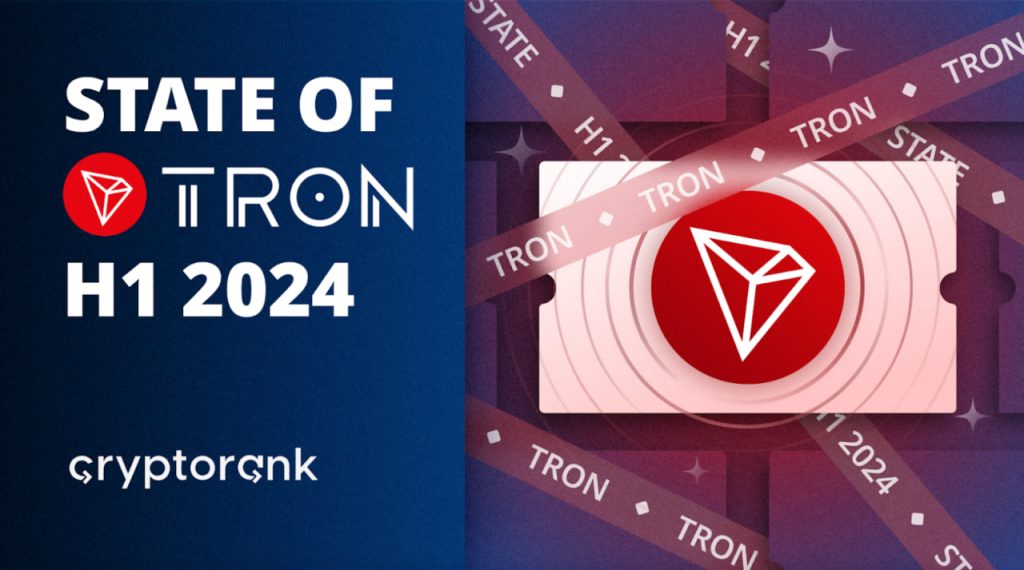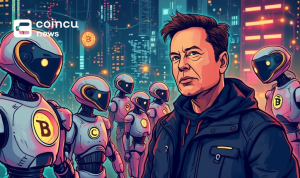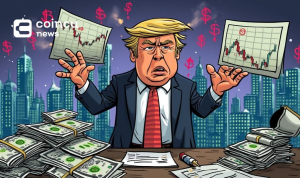Launched in 2017, TRON was originally positioned as an Ethereum killer. While all Ethereum killers failed to kill Vitalik’s brainchild, TRON managed to take away the leadership in the realm of stablecoin transfers. Let’s understand what happened in TRON over the last six months and in which direction it is developing.

Key Findings:
- Stablecoin Dominance: TRON’s network holds about 53.7% of the total USDT supply, making it a leading platform for stablecoin transactions.
- Ecosystem Scale: TRON’s overall TVL exceeds $22 billion, while DeFi’s TVL stabilizes at $8 billion with the significant dominance of JustLend.
- Future Prospects: TRON focuses on enhancing stablecoin payments and providing Bitcoin integration, including the development of its own Bitcoin Layer 2 solution and gasless stablecoin transfers.
Specifics of TRON Chain
The TRON blockchain uses the Delegated Proof-of-Stake (DPoS) consensus algorithm. It is a consensus mechanism where stakeholders elect a small number of delegates to validate transactions and secure the network on their behalf. Blocks are generated every 3 seconds, and the maximum network performance is 2,000 transactions per second.
There are three layers in the TRON architecture:
- Core Layer: Manages the TRON’s consensus mechanism, accounts, TRON Virtual Machine (TVM), and runs Solidity-based smart contracts.
- Storage Layer: Optimize data storage and data segmentation, prioritizing security and stability.
- Application Layer: Facilitate the creation of decentralized applications.
TRX Token Overview
The TRX token is the native utility cryptocurrency of the TRON blockchain. Initially launched as an ERC-20 token on Ethereum during its 2017 ICO, $TRX had a total issuance of 100 billion tokens. These were allocated as follows: 40% for the public token sale, 15% for a closed pre-sale, and 35% to the project’s reserve fund.
Subsequently, all ERC-20 tokens were converted to native $TRX on the TRON blockchain. Periodically, the total supply is reduced by burning events and currently stands at around 87 billion tokens.
Now, $TRX serves as the primary unit of settlement within the TRON ecosystem, used to pay transaction fees, rewards for staking, and block confirmations by super-representative nodes. When users stake $TRX, they receive Tron Power, which grants them voting rights to elect super-representatives. These super-representatives, once elected, are the ones who vote on network development proposals in TRON DAO on behalf of the community. Therefore, while Tron Power itself does not directly vote on proposals, it empowers users to choose the super-representatives who make those decisions.
Despite $TRX being the main gas token for performing transactions, there are two types of resources that can be used to execute smart contracts and perform transactions in TRON:
- Bandwidth is used for basic transactions and account operations, allowing users to perform actions without incurring fees if they have enough Bandwidth points.
- Energy is used for executing smart contracts, acting as fuel for computational tasks on the TRON network. Users can also interact with smart contracts for free if they have enough Energy resources.
Both resources can be acquired by staking $TRX tokens, incentivizing users to hold and support the network.
Looking at the current $TRX distribution, we can see that the top 10 addresses own 31.61% of the total supply, and the top 500 addresses own as much as 85.50%. Only one of the top 10 belongs to the exchange wallet. Although it is important to note that Top 1 is the address of the smart contract, which is responsible for the TRX token wrapping, it owns 14.68% of the entire issue.
Stablecoins Performance
TRON’s primary use case is to serve as a USDT stablecoin exchange network, surpassing Ethereum in this specific area. By focusing on stablecoin payments instead of DeFi or dApps, TRON delivers high speeds, operational continuity, and reliability. This focus created a snowball effect during USDT’s initial surge in popularity, leading to widespread adoption among businesses, e-commerce platforms, and international money transfers, thereby extending TRON’s utility far beyond crypto-native users. Currently, about 53.7% of all USDT total supply (~113.2 billion) is on TRON. That is about 2x the amount the USDT stablecoin settled on Ethereum.
At the time of writing, the total market cap of TRON stablecoins has almost reached $62 billion, with over 48 million holders. USDT is not the only stablecoin, although it accounts for approximately 98.20% of the total stablecoin supply on the TRON chain.
In the past six months, there have been twelve issuances of USDT on TRON at a billion dollars each, marked with green spikes on the chart below. This resulted in the stablecoin total supply exceeding $60 billion.
The most recent burning event took place on August 22, 2023, during which 1.2 billion $USDT was burned. Stablecoin burn is a mechanism to reduce liquidity in crypto markets, akin to how central banks decrease the money supply in traditional markets. Therefore, keep your finger on the selling button whenever news of $USDT burning emerges, though such events are unlikely to occur in the next few years.
Anyway, if we look at the distribution, we find that the Top 500 addresses own 41.62% of the total supply, while the Top 10 own 27.11%. Most of the Top 10 are hot and cold wallets of the largest exchanges. Thus, USDT’s distribution is much more decentralized than that of the $TRX token.
Ecosystem Performance
The current overall TVL on TRON has recently surpassed $22 billion. The TVL chart below shows the total value of crypto assets locked in various protocols on TRON, including the TRON chain itself and DeFi protocols on TRON.
While the chart above is useful, it poorly demonstrates the state of DeFi compared to other blockchains, so going forward, we will use the DefiLlama methodology, focusing on DeFi’s TVL. According to that, TRON now holds the second place in dApps TVL among all blockchains. At the time of writing, the TVL of the TRON blockchain stands at over $8.2 billion.
The TVL volume held steady at around $8 billion throughout the first half of 2024. It is important to note that TRON’s TVL, as well as most other indicators, barely correlates with market-wide fluctuations.
Here are the Top 5 protocols by TVL:
- JustLend – over $6 billion in TVL. JustLend is TRON’s first official decentralized lending platform where users can lend and borrow digital assets, earn yields, participate in TRX staking, and rent Energy.
- JustStables – over $1.5 billion in TVL. JustStables is a decentralized finance system for the issuance and management of USDJ, which is a collateral-based decentralized stablecoin that is pegged to the US Dollar at a 1:1 ratio.
- SUN – over $580 million in TVL. SUN is the first integrated platform for swapping, yield farming, and self-governance on TRON.
- stUSDT – over $221 million in TVL (RWA protocols aren’t directly counted in the chain’s TVL). stUSDT is a TRON-based platform for the issuance of a homonymous token that serves as proof of investment in real-world assets (RWAs) and allows earning passive income for locking USDT.
- JustMoney – over $580k in TVL. JustMoney is a decentralized cross-chain DeFi protocol, consisting of a DEX, bridge, cross-chain swap, and a decentralized payment gateway with 4 subproducts.
A look at the token breakdown on JustLend reveals that 93.78% of tokens are wrapped $BTC, while $USDT accounts for only 1.67%. This suggests, firstly, that $USDT has not yet found much utilization in DeFi and is used purely for transfers, and secondly, that Bitcoin still has undiscovered potential within the TRON blockchain.
On-Chain Activity Overview
TRON shows outstanding performance in terms of user on-chain activity with over 181 million active addresses in Q2 2024, repeating its success from Q1. Such high on-chain activity is mainly driven by stablecoin transfers and interaction with key protocols.
Meanwhile, in terms of total transactions, the TRON network is only in 4th place. It is worth noting that TRON still has more transactions this quarter than leading EVM blockchains.
In the 6 years since the launch of the mainnet, TRON has gained over 274 million unique addresses, mostly represented by user accounts. This amount places it in 4th place among all blockchains, just behind Ethereum. With the past traction, TRON may surpass Ethereum and reach 3rd place in the coming years.
A Look to the Future
If asked about TRON’s future focus and development direction, the author would suggest further enhancing stablecoin payments and adopting Bitcoin payments. However, it appears that things are already moving in that direction.
Bitcoin Layer 2
In February 2024, Justin Sun announced the development of Bitcoin Layer 2, based on the TRON blockchain. This initiative seeks to integrate various token types within the TRON network, including stablecoins, with the Bitcoin network and its Layer 2 solutions, such as Bitcoin Ordinals. The goal is to provide a bridge that connects TRON directly with Bitcoin, enabling the movement and interaction of assets across both networks.
The roadmap includes several stages. In Stage α, with Bitcoin already accessible within the TRON network, TRON DAO plans to bridge more Bitcoin-based assets to TRON. Stage β will involve collaborations with multiple Bitcoin Layer 2 protocols to support restaking initiatives and grow the Bitcoin Layer 2 ecosystem. Stage γ will introduce a protocol integrating TRON, BitTorrent Chain (BTTC), and the Bitcoin chain, aiming to combine the benefits of PoS and PoW mechanisms.
Thus, TRON has entered the race for the highly desired liquidity locked up in Bitcoin. Whoever finds the right key to that door will prosper. Considering TRON’s substantial stablecoin market, the TRON team has a good chance to achieve that.
Gasless Stablecoin Transfers
Justin Sun has recently announced a service that will allow for the transfer of stablecoins without paying a fee in $TRX, but in stablecoins instead. The necessity of having a small $TRX balance in your wallet just to pay fees has long been an obstacle to TRON’s real mass adoption among ordinary users. Soon, this obstacle will be removed.
This will likely be achieved through the introduction of paymasters, similar to Ethereum’s Layer 2 networks. In Ethereum’s account abstraction, paymasters are smart contracts that enable flexible gas policies, allowing decentralized applications to sponsor user operations. Thus, in the end, the gas payment will still be made in $TRX, but it won’t be the user’s concern. So, the TRX token won’t lose its primary utility, and the introduction of the new feature should not negatively impact price action. Check out our Account Abstraction article to learn more.
In the first stage, the solution will be integrated into the TRON blockchain and then extended to Ethereum-compatible networks, such as the BTTC Chain. The service is scheduled to launch in the fourth quarter of 2024.
Output
TRON has significantly evolved since its inception, shifting from its initial goal of directly rivaling Ethereum to focusing primarily on stablecoin transfers. Stablecoins, particularly USDT, have found a thriving ecosystem on TRON, driven by higher transaction speeds and reliability. This has positioned TRON as a critical player in global stablecoin transfers, with over half of the total USDT supply circulating on its network. The adoption extends beyond crypto-native users to businesses and e-commerce platforms worldwide.
The TRON ecosystem’s TVL indicates strong engagement and trust in its DeFi platforms, with JustLend leading. Looking ahead, TRON is set to enhance its performance through initiatives like Bitcoin Layer 2 integration and gasless stablecoin transfers, aiming to remove adoption barriers and further solidify its position in the blockchain space.
| Disclaimer: The text above is an advertorial article that is not part of Coincu.com editorial content. |
























